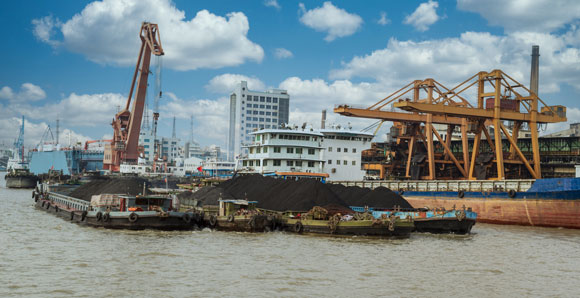Rare Earths MMI: China mulling stricter rare earths regulations
The Rare Earths Monthly Metals Index (MMI) surged by 20.5% this month, as last month China indicated it is mulling stricter rare earths regulations.
China to consider stricter rare earths regulations
As nations and businesses around the world make pledges to commit to net-zero emissions targets, demand for rare earths will only increase.
Rare earths, a series of 17 elements, make their way into a variety of high-tech applications. Those include everything from the consumer electronics that have become ever-present in people’s lives to military applications to renewable energy installations.
With respect to renewable energy, wind power requires rare earths like neodymium, dysprosium and praseodymium.
However, as industry watchers have noted for years, China controls an overwhelming portion of the rare earths market.
As such, any policy directives Beijing undertakes related to the sector are worth monitoring.
China’s Ministry of Industry and Information Technology (MMIT) is soliciting opinions on stronger regulations governing the country’s dominant rare earths industry, the state-run Xinhua news agency reported last month.
Per the report, an MIIT draft document “includes rules concerning regulatory responsibilities, project approvement and quota management, while stressing supervision as well as management of the entire industry chain of the precious ore.”
Furthermore, the draft indicates no individual can buy or sell rare earths that have been “exploited or extracted illegally.”
The draft document also calls for establishment of “a tracking system for rare earth products.”
We’re offering timely emails with exclusive analyst commentary and some best practice advice. Sign up here.
Lynas signs contract to build light rare earths facility in US
Meanwhile, Lynas Rare Earths Ltd announced it had signed a contract to build a light rare earths separation facility in the US.
“This project is scheduled to be completed in accordance with the Department of Defense timetable and as part of our Lynas 2025 plan,” the Australian firm said in a Jan. 22 release. “Detailed costings are still being finalized; we expect Department of Defense funding to be capped at approximately US$30 million. Lynas will also be expected to contribute approximately US$30 million under the agreement.”
The plant, which is likely to be in Texas, will produce approximately 5,000 tonnes per year of rare earths products. Included in that output will be approximately 1,250 tonnes of neodymium and praseodymium.
Furthermore, the plant will receive material directly from the cracking and leaching plant Lynas is building in Kalgoorlie, Western Australia.
“This agreement is consistent with the U.S. Government’s commitment to rebuild the domestic industrial base, while working effectively with partner nations,” Lynas CEO and Managing Director Amanda Lacaze said. “The Texas plant will ensure the U.S. has a secure domestic source of high quality separated materials. This secure supply will provide the essential foundation for the renewal of downstream specialty metal making and permanent magnet manufacturing in North America.”
Rise of renewables
In its recent forecast, the Energy Information Administration reported the US’s share of electricity generation from renewables is expected to double over the next 30 years.
Renewables accounted for 21% of US electricity generation in 2020. Meanwhile, the EIA forecast renewables will account for 42% by 2050.
The EIA added wind “will be responsible for most of the growth in renewable generation from 2020 through 2024.”
Wind will account for two-thirds of the increase in that period, according to the EIA.
Biden climate plan
As we noted in the recent Construction MMI and Automotive MMI reports, President Joe Biden’s plans to address the climate crisis will, if executed, likely lead to a surge in demand for a wide variety of metals.
Copper, for example, will rise as the automotive consumer base transitions — albeit slowly — to hybrid and battery electric vehicles.
In an executive order, Biden called for the reconvening of the Major Economies Forum on Energy and Climate.
“In cooperation with the members of that Forum, as well as with other partners as appropriate, the United States will pursue green recovery efforts, initiatives to advance the clean energy transition, sectoral decarbonization, and alignment of financial flows with the objectives of the Paris Agreement, including with respect to coal financing, nature-based solutions, and solutions to other climate-related challenges,” the order stated.
Biden’s plan calls for a net-zero emissions economy no later than 2050.
Once again, whether these plans will come together is an open question. However, the overarching push for cleaner energy is a harbinger for a rare earths demand surge.
Actual metals prices and trends
The Chinese yttrium price rose 0.4% month over month to $33.41 per kilogram as of Feb. 1.
Meanwhile, terbium oxide jumped 20.5% to $1,371 per kilogram. The neodymium oxide price surged 12.8% to $89,050 per metric ton.
Europium oxide rose 0.4% to $32.64 per kilogram. Dysprosium oxide jumped 18.9% to $359 per kilogram.
Find more insight on MetalMiner’s LinkedIn.





Leave a Reply